Talking Sass with the co-founder of Dribbble
Generate London keynote speaker Dan Cederholm talks about Dribbble's future, his role in the Paraguayan design industry, and his love of Sass.
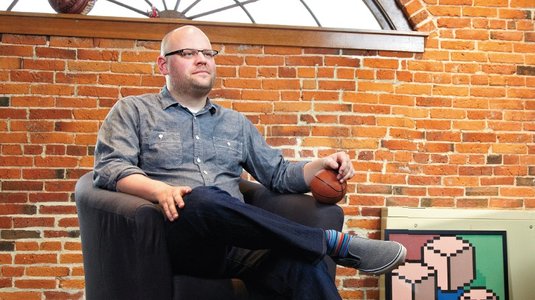
Co-founder of Dribbble Dan Cederholm is a busy man. Soon, the author of five books on web building will deliver a keynote Q&A session, hosted by Meagan Fisher, at net magazine's Generate London conference on 26 September.
As co-founder of the popular portfolio site, Cederholm will also be attending the first official Dribbble meetup in London, held the evening before.
Around this busy schedule, Cederholm also finds time to be a leading figure in the web design industry, and has some unique achievements under his belt.
With Sass for Web Designers, Cederholm is the first person ever to have two books published by industry tastemakers A Book Apart. Which is perhaps surprising for someone who describes himself as a "reluctant convert" to the joys of CSS preprocessors.
"I was very reluctant to use Sass," Cederholm tells us over a Skype connection from his home in Salem, Massachusetts. "I've been building sites by hand for years, and I take pride in the way the code is presented. That's one of the things that bugged me about it, at least initially: it can output various styles, but none of them matched my own."
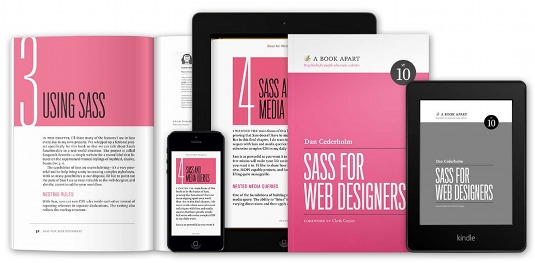
The joy of Sass
It was Cederholm's Dribbble co-founder, Rich Thornett, who eventually convinced him to give Sass a try. Quickly realising the benefits of the preprocessor – and that web inspectors have changed the way that frontend developers look at one another's code – Cederholm was a convert.
"Once I started using Sass, a lot of misconceptions I had disappeared," he says. "That's one reason the book came about. There are probably a lot more people like me out there who aren't using it for reasons that don't make much sense."
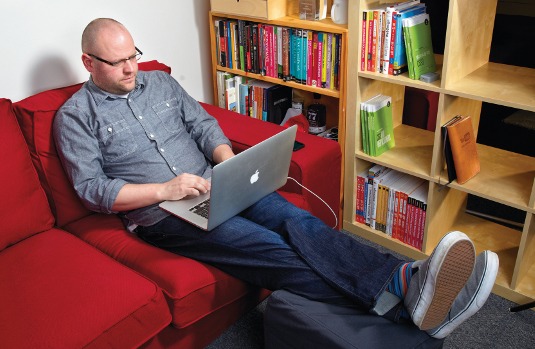
Among the myths that Cederholm debunks in Sass for Web Designers is that the preprocessor requires frontend developers to master backend tools. "It's written in Ruby, but you don't need to know Ruby at all," he says. "Or much command-line: that's another one. In the book, I talk about all the commands you need to know in a few pages."
According to Cederholm, other non-reasons for not using Sass include the misconception that it produces bloated code – "Sass isn't to blame there: you can write bloated CSS by hand. Just pay attention to the output" – or, another reason, that it requires a radical change in workflow.
"It can completely change the way you write CSS, but at the same time, if you're using the SCSS syntax, converting an existing style sheet to Sass is incredibly simple," he says. "When the time came to convert [Dribbble], the way we started was literally by changing the file extension to .scss. Over time, I've slowly ported over portions of the style sheet, using variables and mixins, but it's been a gradual process. We didn't have to throw away the whole site design and start over."
For Cederholm, the "big wins" of using Sass included being able to use variables to handle repetitive tasks like assigning Dribbble's brand colours to page elements, and being able to use mixins to 'Retinize' the site for modern high-resolution displays: "Being able to write a couple of lines of Sass that will [generate] a large media query that knows when to serve a high-res image has been incredibly helpful."
Cederholm points to the benefits Sass has in responsive design work: notably, the option to nest media queries and to use variables for breakpoints. But in his own work, its main role has been to speed up small, but repetitive, tasks – things like "the simple act of nesting to build selectors, rather than writing out the entire selector each time to give context and show the hierarchy."
And as he points out, what goes for Sass today may well go for hand-built CSS tomorrow. "Another reason I like Sass is that you could see it as a sandbox for future CSS specifications," he says. "It's going to take a long time before browsers start supporting [the extend directive or mixins], but you can get a leg up by supporting Sass."
Not that Cederholm can envisage going back to building CSS purely by hand. "I've got so used to using Sass while working on Dribbble that when I'm outside of it – when I'm skinning a blog template or a shopping cart system, say – and Sass isn't available, it's frustrating. I miss it immensely, even for small things like that."
The power of Dribbble
But what of Dribbble itself? When we last spoke to Cederholm, the site was in its infancy, with just 3,000 'Players' with the power to post as well as view images: many of them Cederholm's friends and colleagues. Three years later, there are 50,000, and the total site membership is over 400,000.
As well providing a snapshot of current design trends, Cederholm describes it as an "efficient lens" through which to view the industry – the site supplies a daily dose of creative inspiration that many designers now find invaluable. But while the site has grown in size and influence, many of the criticisms levelled at it in those early days persist.
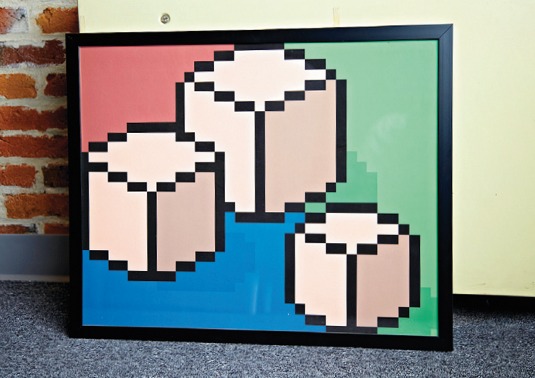
"One of the things that Dribbble gets dinged on a lot is that if you only pay attention to the popular page, it appears that everything on the site is a particular style, depending on what day it is: everything is flat, or everything is skeuomorphic – or now, everything is long shadows, " says Cederholm. "I actually think it's fun to watch that kind of thing – the popular page is popular for a reason, right? – but people sometimes take it too seriously. I'm looking at my feed from this morning, and it's got all sorts of stuff in it," he continues. "Someone's working on a typeface; someone's working on an iPhone app; and someone else is drawing Disney characters. There's a whole variety of work, and it depends on who you follow."
Another historical criticism of Dribbble is that it's elitist. Its invite-only membership strategy (to become a Player, you have to be 'drafted' by an existing member) may have come about by accident, to minimise the administrative load on Cederholm and Thornett, who were then running Dribbble as a spare-time concern, but it had unexpected consequences for the prestige of the site.
"People coveted invitations because they were so rare; they were careful about who they invited, and that affected the community" says Cederholm. "That's been great, but the challenge now is how to grow the designer base – because we want to, obviously; it was never meant to be an exclusive thing – and at the same time not disrupt the experience for our existing members."
The key to this process, Cederholm believes, will be tools that make it possible to 'curate' your own Dribbble experience; to choose who to follow on the site, in the same way as you would on Twitter. But for now, Dribbble has hired a part-time staff writer to post weekly 'replays' on its blog: roundups of exciting new work reflecting the diversity of projects showcased on the site.
Even with a writer on board, the Dribbble team consists of just six people: a tiny fraction of the development resources available to other social networks. Cederholm says that he doesn't expect staff levels to change radically in the future, but points out that steady growth has its benefits. "We've taken a slow approach to just about everything to do with Dribbble because we're bootstrapped, and we haven't taken funding," he says. "One of the advantages of that was that the features we added were directed by our observations of how people were actually using the site. Rebounding [in which one user posts work in response to another], for example: that's just something people started doing, so we built a feature around it."
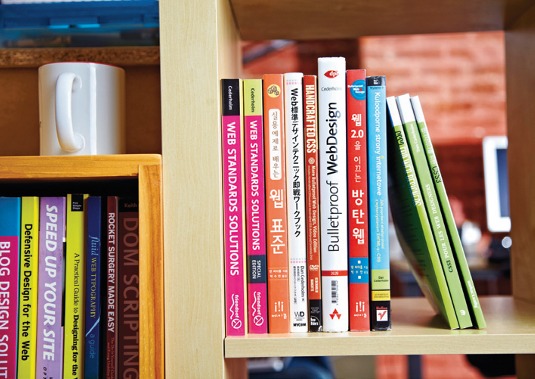
One recent extension of this is the site's new Teams feature. "We saw [project managers] creating Dribbble accounts. Their designers were also on Dribbble, but the two weren't connected, so they weren't getting the same amount of attention," Cederholm says. "We wanted to create themes to bring attention to individual designers within companies."
The growth in Dribbble's membership may have been steady, but the growth in its influence has been exponential.
"One of the best things for me is going to a [user] meetup and hearing, 'I got a job because of Dribbble,'" he says. "Or even, 'I met my business partner on Dribbble because we're the only two designers in Paraguay, and now we've been working together for three years.'"
Hold on. Dribbble shaped an entire country's web design industry? "That's a true example," laughs Cederholm. "It's someone I just met at BubbleConf: Juan Teixidó, a brilliant designer. He was there with a friend, and they'd met on Dribbble. Now they're building a business together."
But if exposure on Dribbble can land designers jobs, lack of it can lose them jobs, too. With that great power – if not great responsibility – comes, at the very least, great pressure.
"The hard part for me – and I'm growing a thicker skin every day – is the negativity," admits Cederholm. "There are plenty of people who don't like Dribbble, or what it does, or who think that it's affecting the design world negatively. Sometimes, they're people I respect and admire, and that's tough. I know deep down that we aren't ruining the design world, but I guess if someone's writing about Dribbble, either negatively or positively, we are affecting their perception of it."
The perils of chefs
Whether you value or resent Dribbble's power to shape designers' perceptions of the industry in which they work, it's impossible to deny that it feels like a community endeavour, rather than the result of a corporate masterplan. As well as the site's slow, organic growth, Cederholm attributes Dribbble's community spirit to the fact that it's run from outside traditional business hotspots.
"Living in Salem has its benefits in that we're insulated from [that] world, " he says. That helps us keep our heads down and focus on just building something good. I'm not knocking San Francisco, or New York, or London, but for me, it's better not to be distracted by the noise: where we should be steering Dribbble, what kind of investment we need to take now, [or how] to compete with all those other startups who are also in town."
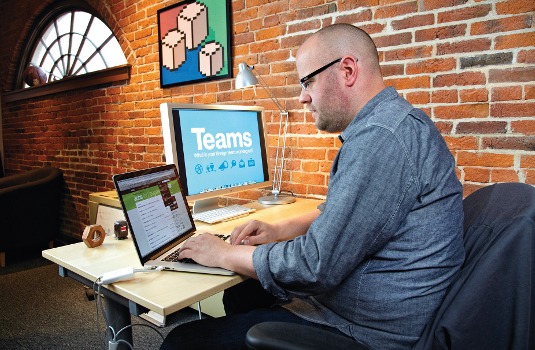
So we won't be seeing any traditional Silicon Valley perks, like personal chefs, at Dribbble any time soon, then?
"Oh, don't get me wrong: I'd love a personal chef, " laughs Cederholm. "But when Dribbble has one, I'll know that either we've made it – or that we've lost all hope of humanity, and that it's time to get out and buy a farm."
Words: Jim Thacker
For more information on and to get a ticket to Generate London, visit the Generate website.
This article originally appeared in net magazine issue 249.

Thank you for reading 5 articles this month* Join now for unlimited access
Enjoy your first month for just £1 / $1 / €1
*Read 5 free articles per month without a subscription

Join now for unlimited access
Try first month for just £1 / $1 / €1
Get the Creative Bloq Newsletter
Daily design news, reviews, how-tos and more, as picked by the editors.

The Creative Bloq team is made up of a group of design fans, and has changed and evolved since Creative Bloq began back in 2012. The current website team consists of eight full-time members of staff: Editor Georgia Coggan, Deputy Editor Rosie Hilder, Ecommerce Editor Beren Neale, Senior News Editor Daniel Piper, Editor, Digital Art and 3D Ian Dean, Tech Reviews Editor Erlingur Einarsson, Ecommerce Writer Beth Nicholls and Staff Writer Natalie Fear, as well as a roster of freelancers from around the world. The ImagineFX magazine team also pitch in, ensuring that content from leading digital art publication ImagineFX is represented on Creative Bloq.
